Within the last two years, some of the best Hong Kong movies starring Angela Mao Ying have come out on DVD from Shout Factory, remastered, with cleaned-up soundtracks and new subtitles. My earlier VHS and DVD copies had all sorts of problems, so I’ve been wanting to sit down and watch these new editions and thought I’d use the occasion of her 66th birthday today, September 20th, to offer a write-up on them. I watched what I consider her four best films for this piece: HAPKIDO (1972), WHEN TAEKWONDO STRIKES (1973), THE TOURNAMENT (1974), and BROKEN OATH (1977). I didn’t have time for the fifth of her top five, LADY WHIRLWIND (1972)
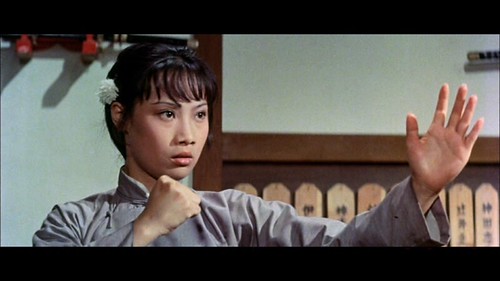
Mao is probably best known to American fans for her portrayal of Bruce Lee’s ill-fated sister in ENTER THE DRAGON (1973), but she was one of the first kung fu stars to emerge from the newly-formed company, Golden Harvest, in 1970 and had a nice run as one of the studio’s top stars from 1970-77, when she made her last film for the studio. (Bruce Lee and Jimmy Wang Yu were the other reigning GH stars, at least for part of that period.) She then moved from Hong Kong back to her native Taiwan and continued to make kung fu films there until 1980 and other types of films for a few years before leaving the business in 1983 with only a couple of cameos thereafter. Her best work remains the body of films she made at Golden Harvest, where she had top-notch directors like Huang Feng, who directed her in nine films, including four of her best; Lo Wei, who directed Bruce Lee’s first two Hong Kong starring films; King Hu (A TOUCH OF ZEN), who directed her in THE FATE OF LEE KHAN; and the Korean director Chang-Hwa Jeong, who directed Mao in BROKEN OATH and is best known for KING BOXER, which started the worldwide kung fu craze when it was released in the U.S. in March 1973 as FIVE FINGERS OF DEATH. She also had great action directors on these films, most notably her frequent co-star at GH, Sammo Hung, who served that function on ten of her movies there. Yuen Wo Ping, a future kung fu director in his own right, co-directed the action scenes of BROKEN OATH. A young Jackie Chan was action director on DANCE OF DEATH.
I don’t have much biographical information on Ms. Mao, but I do know that, like Jackie Chan, Sammo Hung and Yuen Biao, she trained at a Peking Opera school as a child and learned martial arts and acrobatics there. She also trained extensively in hapkido for her role in HAPKIDO, earning a 3rd degree Black Belt, and used that skill in subsequent films, including WHEN TAEKWONDO STRIKES. While there were other notable female kung fu stars in the 1970s, Angela’s fight scenes are the most ferocious, the most intricate and the most intense. She fought hard and did most of her own stunts, doubled only for some of the most virtuoso acrobatic spins. She was a fine actress and was always believable in her fighting roles, although, truth to tell, there was never much characterization written into the scripts. She was also quite beautiful and the smart directors gave her plenty of closeups.
I tend to judge Angela Mao films by the amount of fight footage devoted to her. In several of her films she has to compete for time with some formidable co-stars, including Sammo Hung, Carter Wong and Jhoon Rhee (who brought taekwondo to the U.S.), but too much of a good thing is better than not enough of a good thing. However, in too many of her later films, her fight scenes are few and far between. The films I consider her best have tons of fight scenes starring her.
HAPKIDO (1972)
HAPKIDO, released to theaters in the U.S. in an English-dubbed version retitled LADY KUNG FU in 1973, is one of the few Angela Mao films I haven’t already reviewed on Amazon or IMDB. One reason for that is the lack of any decent copy of it until the Shout Factory release. I’ve always considered BROKEN OATH to be Mao’s best film, but after seeing HAPKIDO again in this new DVD edition, I might just change my mind. And this despite Angela not having her first extended fight scene until the one-hour mark and her first fight with multiple opponents at the 76-minute mark.
The three protagonists, played by Mao, Carter Wong (in his first film), and Sammo Hung, are Chinese students learning hapkido at a school in Korea in 1934. The action quickly shifts to Cangzhou, China, where the students establish a hapkido school, only to run into rivalry with the Japanese Black Bear Dojo, whose students, including Chinese working for the Japanese, bully the locals, thus compelling the three new hapkido teachers to stand up for them, leading to a series of grueling fights that end tragically for some of the good guys. One key sequence shows the Japanese bullies, led by Bruce Leung, terrorizing vendors at a local fish market, taking food without paying and pouring boiling water over live chickens and live fish. When the other vendors rally to stop them, the bullies start beating them up until Sammo, who has been watching and trying to heed his teacher’s call for “Patience,” has no choice but to intervene, killing several of the bullies and then taking the wounded vendors to the hapkido school for treatment.
Eventually, the number two man at the Korean school, played by Whang In-Sik, comes to China to help out and defeat the Japanese once and for all. This is one of many kung fu films from the era where the Japanese, who had colonized Korea for much of the first half of the 20th century and occupied parts of China for 14 years (1931-45), are brutal villains through and through. Their Chinese lackeys come to bad ends also.
The head of the hapkido school in Korea is played by Ji Han Jae, described on Wikipedia “as one of the highest ranking hapkido instructors in the world and founder of Sin Moo Hapkido.” The head of the Japanese school in China is played by Teruo Yamane, the only Japanese actor in the film.
The fight scenes are all directed by Sammo Hung (billed in the cast as Hung Chin Pao and as action scene arranger, Chu Yuan Lung) and are generally shot in large, open spaces, involving multiple opponents and, in some scenes, lots of props. The camera catches the action in wide shots that allow us to see everyone’s moves. You don’t get a lot of fast-cutting or camera tricks since they’re not needed. These actors know how to fight and, more importantly, how to adjust their punches and kicks for the camera. Some future martial arts stars can be spotted among the hordes of fighters at the Japanese school, including Yuen Biao and, seen at the left in this screen grab, an 18-year-old Jackie Chan:
WHEN TAEKWONDO STRIKES (1973)
WHEN TAEKWONDO STRIKES was shown in the U.S. as STING OF THE DRAGON MASTERS, and also has an anti-Japanese theme. Like HAPKIDO, it was a co-production with South Korea. This time, the action focuses initially on a Korean teacher of Taekwondo, played by Jhoon Rhee, and his students, Carter Wong as a Korean and Anne Winton as a French girl whose uncle (played by Andre Morgan, an executive for Golden Harvest) is priest at the local Catholic church. They’re in Seoul, Korea, in the 1930s, and they run afoul of the local Japanese colonizers, getting into several fights, including at the church, and then going into hiding. A Chinese girl (Angela Mao) working with her mother at a local restaurant soon intervenes on their behalf and fights several Japanese herself. Eventually, after tragedies ensue, the Japanese hold Jhoon Rhee prisoner while Carter, Angela and Anne head to China to provide key information to anti-Japanese Koreans there. The Japanese, with Jhoon Rhee in tow, soon follow them to China and the fights start all over again, leading to a big finale where the four leads take on the Japanese at their local karate school.
Sammo Hung plays one of the Japanese villains, as do two Korean martial artists, Whang In-Sik and Kim Ji-Ju. The Japanese major is played by Huang Feng, the film’s director. The Japanese head of the karate school in Seoul is played by an actual Japanese karate expert, Kenji Kazama. Even though the film is set in the 1930s, the Japanese villains, except for the Major and a handful of soldiers seen late in the film, are dressed like samurai from a couple hundred years earlier and carry swords, not guns.
Sammo Hung, seen above, was the co-director (with Chan Chuen) of the action scenes and every one of them is spectacular, from the first series of fights in the church to the sprawling battle in Angela’s restaurant in which she faces off alone against a dozen Japanese samurai to the final battle at the Japanese karate school in China. Angela has a great one-on-one fight with Sammo in the restaurant scene, first with swords, then with fists.
Excerpts from my Amazon review of the Hong Kong import Fortune Star release, which came out in 2007:
Finally, kung fu fans can see this 1973 Hong Kong-produced film for the first time in its intended version—letter-boxed and in its original Mandarin language (with English subtitles)—in a new legit, high-quality edition from the Fortune Star/Legendary Collection line of classic Golden Harvest titles. Throw out your old VHS tapes and bootleg discs of STING OF THE DRAGON MASTERS, the film’s English-dubbed version, released only in pan-and-scan/cropped editions where you couldn’t see half of the action in any fight scene and which featured a patched-together soundtrack where the music (mostly cribbed from Richard Strauss’ “Also Sprach Zarathustra,” the bombastic theme used in 2001: A SPACE ODYSSEY) frequently drowned out the dubbed dialogue.
There are six fight scenes in the first 43 minutes, three of them inside the Catholic church and three involving Angela. The Japanese are played by Japanese, Korean and Chinese martial artists.
Curiously, everyone in this Korean setting—Korean, Japanese, Chinese, French—speaks Mandarin.
This film represents quite a contrast with the rival Shaw Bros. kung fu adventures of the era, which rarely depicted such a diverse array of different martial arts forms in one film and rarely employed non-Chinese martial artists. The film’s original trailer is included on the disc and identifies each of the martial artists featured in the film and their particular specialty.
THE TOURNAMENT (1974)
THE TOURNAMENT has a contemporary setting, rare for an Angela Mao starring role, and includes scenes in Hong Kong and extensive location work in Bangkok, Thailand, where Angela’s character goes to study Thai boxing and is seen using a Super 8 film camera to document Thai boxers in practice bouts and in the ring. She fights a lot but doesn’t kill anybody, her bouts limited to training sessions, contests of skill, and, even a bout in a Thai boxing arena. Carter Wong plays her brother, while Sammo Hung joins a number of Hong Kong character actors in playing members of the HK Martial Arts Association which is outraged when Angela seeks to learn Thai boxing. There are a number of interesting discussions about Chinese martial arts and the failure of its practitioners to keep older techniques alive, preferring secrecy and the loss of so many traditions. Angela’s character wants to strengthen Chinese martial arts by learning other techniques. As such, it devotes a little more thought to contemporary attitudes about its subject than you’d normally find in 1970s Hong Kong martial arts film.
Here is an excerpt from my IMDB review of September 20, 2008, based on seeing Fortune Star’s VCD edition, a cheaper disc format once popular in Asia. (Fortune Star released a DVD two years later.)
THE TOURNAMENT (1974) is a Golden Harvest production that deserves inclusion with such better-known films as BROKEN OATH, WHEN TAEKWONDO STRIKES, HAPKIDO, and LADY WHIRLWIND as the finest work of Angela Mao, the reigning female kung fu star of the 1970s. She has a total of four major fight sequences here, one of which is a remarkable segment at the 41-minute mark that lasts for nine solid minutes as she fights five different guys in succession, starting with Korean hapkido expert Whang In Sik, playing a Japanese karate teacher, and continuing with Sammo Hung, Wilson Tong and two others I didn’t recognize. Later, she fights a Thai kickboxer in the ring in Bangkok (where she’s dressed as a man), fights Thai thugs at the famous Ayuthia temple ruins in Thailand, and finally, back home in Hong Kong, fights a new set of karate fighters who’ve taken over her martial arts school, including a big white guy named George V. Yirikian. So Angela keeps very busy in this film, much to the delight of her fans. Co-star Carter Wong (THE 18 BRONZEMEN) plays Angela’s brother and has his share of fights as well, including three in the Thai kickboxing ring, but he’s generally overshadowed by Angela.
The plot has to do with a kung fu school in contemporary Hong Kong that gets disgraced after two of its students (including Carter) lose in the kickboxing ring at a Bangkok tournament. (The second student, in fact, is killed in the bout.) The school’s teacher, the father of Angela and Carter, is drummed out of the Hong Kong Martial Arts Association, which leaves him so devastated that he hangs himself. Angela, rising above the tragedy, takes it upon herself to study Thai boxing and figure out a way to incorporate it into Chinese kung fu and win back her school’s honor in the kickboxing ring. This creates enemies among the members of the Martial Arts Association (including Sammo Hung), especially after she lectures them on the limitations inherent in the way they teach and practice Chinese kung fu. (Hence the nine-minute fight at her school.) Halfway through the film she heads to Bangkok, dressed as a man, accompanied by Carter and visits kickboxing schools and goes so far as to film training sessions and actual bouts in the ring (using a Super 8 movie camera with a telephoto lens) which she then studies with Carter, all in preparation for their own matches against Thai boxers. What’s important here is that Angela takes a proactive approach to the problem and seeks creative solutions. As a result, she dominates the proceedings throughout, taking on the role of kung fu master in the wake of her father’s death. She doesn’t just fight, she leads.
In the course of her dispute with the HK Martial Arts Association, she has another doozy of a fight with Sammo Hung:
BROKEN OATH (1977)
BROKEN OATH is a little different from the other films cited here. For one thing, it’s set in a much older time period, Qing Dynasty China in either the 17th or 18th century, and Mao is required to play “sexy” as part of a guise to gain entry to the officials she needs to kill in order to achieve vengeance for the death of her father, who was assassinated by four officials working for a corrupt prince, and the subsequent imprisonment of her mother, who died giving birth to her in prison. I’m not sure I’ve ever seen Mao play sexy in any other movie, even though it was something she could certainly do very well. She’s also more cold-blooded here as she routinely flings scorpions onto the necks of her opponents to sting them to death, offering an antidote only when she needs to ply information from them. It’s a reworking of the Japanese film, LADY SNOWBLOOD (1973), which starred Meiko Kaji and was one of the inspirations for Quentin Tarantino’s KILL BILL, VOL. 1 (2002). The strong emotional subtext here is the most important element derived from the earlier film and outlines an air of fate, a calling from beyond the grave that even Mao’s character can feel as a student at a Buddhist convent, something pulling her toward a destiny she cannot escape. After about a half-hour, however, that feeling trails off as the film settles into a formulaic revenge/body count film as Jie Lian (Mao) seeks out the culprits, one by one, and dispatches them, with help from some unexpected quarters. Overall, it lacks the searing tragic and melancholic tone of the Japanese film and its clean, spare design. However, as Golden Harvest period martial arts productions go, BROKEN OATH is easily one of the best-looking I’ve ever seen, in terms of camerawork, costuming and production design and boasts a lovely, original score credited to Joseph Koo. And it’s got one great fight scene after another, all choreographed by Yuen Wo Ping and Hsu Hsia.
Here are excerpts from my Amazon review:
BROKEN OATH is loosely based on the Japanese swordswoman revenge film, LADY SNOWBLOOD (1973), which I’ve also reviewed on this site. Here, Angela plays Jie Lian, daughter of a woman who was wrongly imprisoned and died in her cell after giving birth. She’s raised by nuns at a Buddhist convent where she learns some awesome kung fu and stick-fighting skills. When she kills a would-be rapist, she’s kicked out by the Abbess and sent to live with her godmother (veteran HK actress Wang Lai) who recounts the tale of her mother’s sad fate and how four men with Imperial connections killed Angela’s father and left her pregnant mother to rot in jail after she gouged the eye of one of the killers who tried to rape her. Angela then goes on a mission to find the four men, one by one, and get revenge for her dead parents. She finds unexpected allies in a pair of undercover Imperial agents sent to investigate corrupt practices by Officer Chou, who is somehow tied to the four culprits. It all culminates in a sprawling, nonstop kung fu battle at Chou’s mansion.
The fight scenes were staged by Yuen Wo Ping and Hsu Hsia. Yuen, of course, is well-known as a prominent kung fu director himself, as well as fight choreographer on such high-profile films as THE MATRIX and KILL BILL 1 & 2. Among the fighting co-stars here is Bruce Leung, who had a nice run in kung fu films in the 1970s before making a comeback of sorts in KUNG FU HUSTLE (2005) as “the Beast.” Sammo Hung, a prominent kung fu director in his own right, plays one of the chief opponents in the final battle.
Mao is not only a superb fighter, but a powerful actress and screen presence as well. This role highlights her beauty, too, as she dresses up and develops a “flirty” persona to entice the killers she’s seeking, going so far as to sell her services to a brothel in order to get close to one of her targets. The main draw, however, remains the high number of fight scenes in which she participates, all with the fury of a full-fledged kung fu diva.
Each of the films I’ve covered is accompanied by an original Hong Kong trailer, each about four minutes long. There is no narration in these trailers just onscreen text that includes English translations (with the exception of the untranslated trailer for BROKEN OATH). What I found most helpful about the ones for HAPKIDO, WHEN TAEKWONDO STRIKES and THE TOURNAMENT is that they include identifications of the various martial arts experts in the cast, giving their specialty and level of training. In addition, there’s a trailer for the U.S. release of LADY KUNG FU (HAPKIDO), which offers the hyperbolic narration used to sell these films back then, referring to Mao as a “Hong Kong hellcat” and “an unbreakable China doll.” Interestingly, one of the Hong Kong trailers picks up on that English title and refers to Mao onscreen as “Lady Kung Fu.”
There’s a 17-minute interview with Mao on the HAPKIDO disc, in Mandarin with English subtitles, and it has some interesting material on it, including kind words about Bruce Lee, a description of her training at a Peking Opera school and a reminiscence about being recognized on 42nd Street in Manhattan after her films started playing there. But when the interviewer asks her about the differences between her Golden Harvest films and the ones she made back in Taiwan, she gives an evasive answer. She also says that THE HIMALAYAN is one of her favorites, apparently because she got a trip to Nepal out of it. I was thinking of re-watching that one for this piece, but then I re-read my IMDB review, which was highly negative, and I opted against it. At the end of the interview, she starts to tell how she was discovered for her film career in Taiwan, but then the interview fades out and ends. I’d like to see a longer, more in-depth interview with her conducted by someone well-versed in her career. This one was recorded sometime in the early 1990s.
And then it ends.
Angela Mao lives in New York and was a surprise guest at the New York Asian Film Festival awards ceremony at Lincoln Center in June 2010, having been recruited to bestow a Lifetime Achievement Award on Sammo Hung. I was there and I had no idea Mao would be there, so I was stunned and overjoyed when MC and festival director Grady Hendrix announced her and I put my camera down and leapt to my feet to give her a standing ovation. A young woman in the row behind me asked, “Who is she?” and I told her, “She was the greatest female kung fu star of the 1970s and she played Bruce Lee’s sister in ENTER THE DRAGON.” Here are some pictures I took:
Quite a far cry from this, isn’t it?
Here are the covers of these DVDs:
And here’s the English language trailer for LADY KUNG FU (HAPKIDO):
And, as a final bonus, here’s the video of Angela Mao presenting Sammo Hung with the Lifetime Achievement Award at the New York Asian Film Festival in 2010:
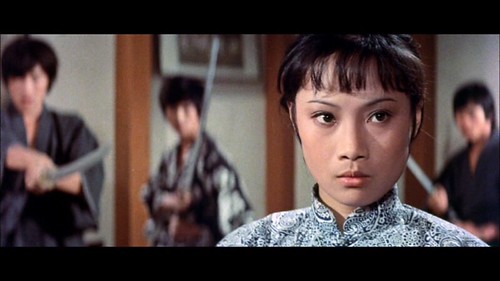

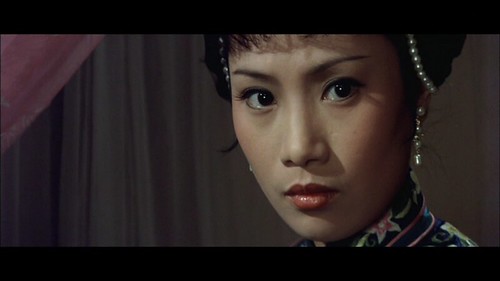
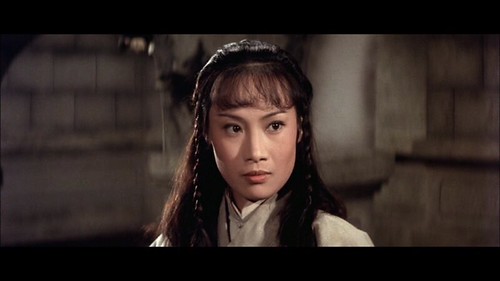
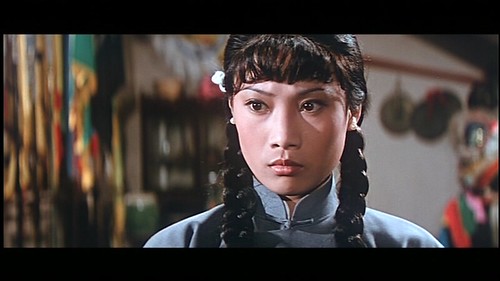
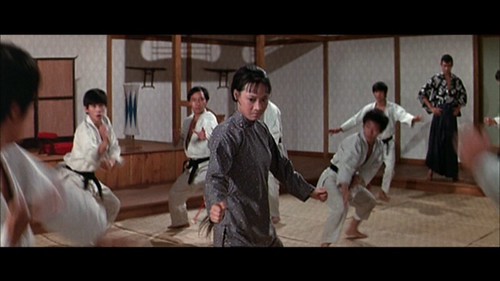
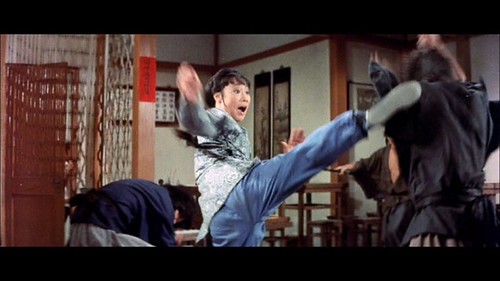

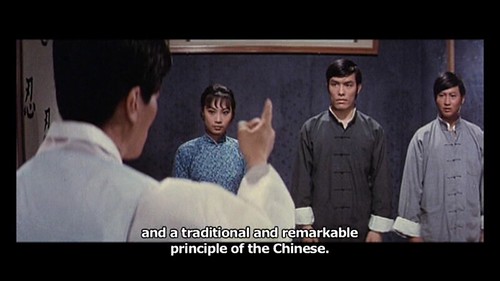

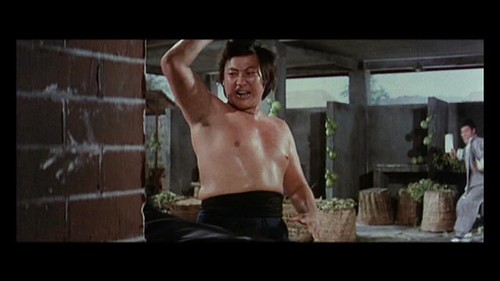


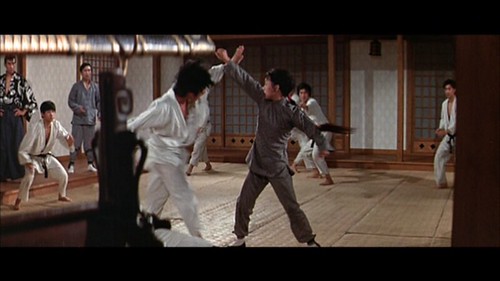
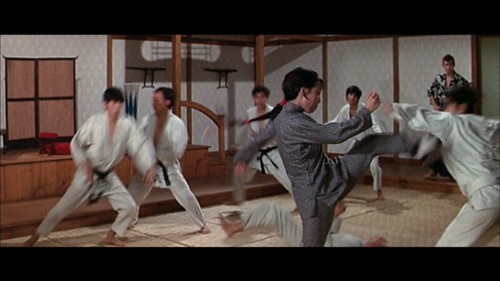
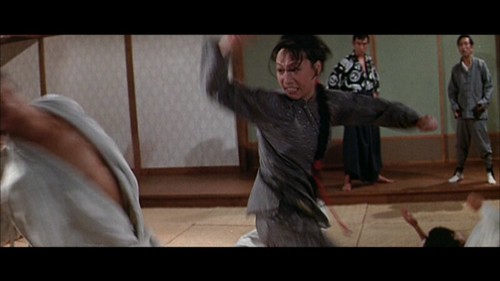
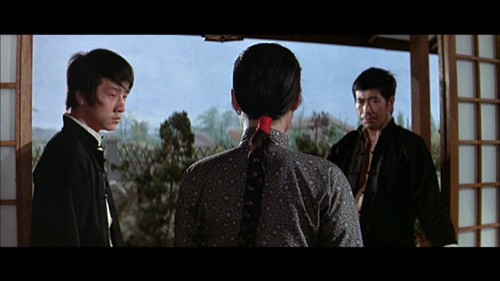
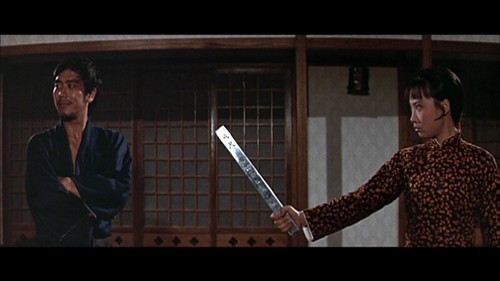
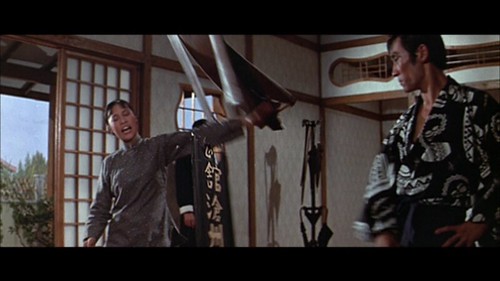

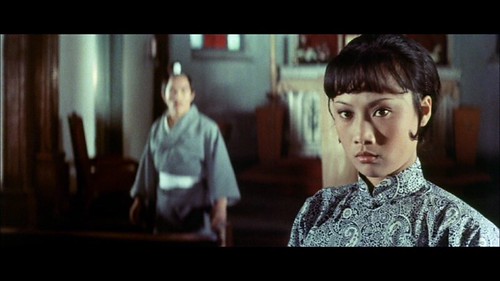


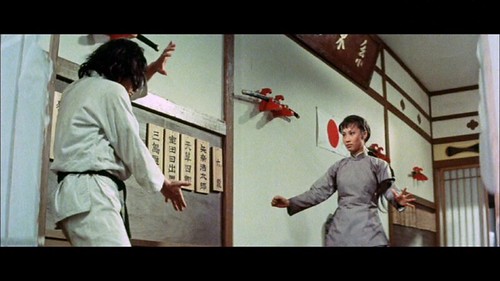
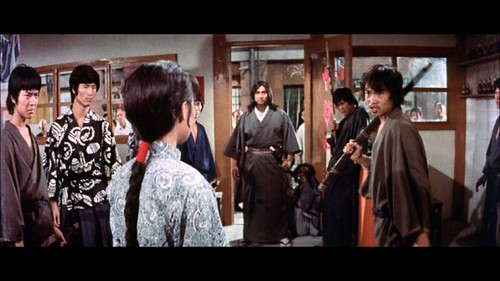



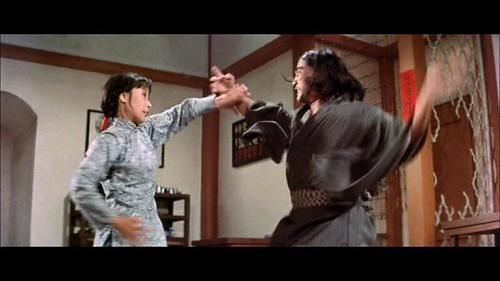
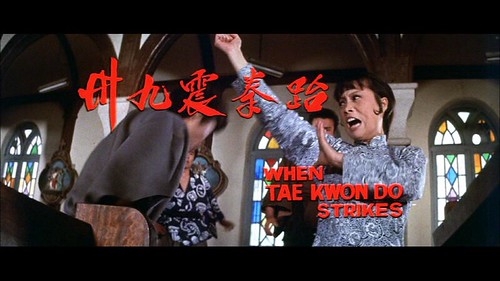

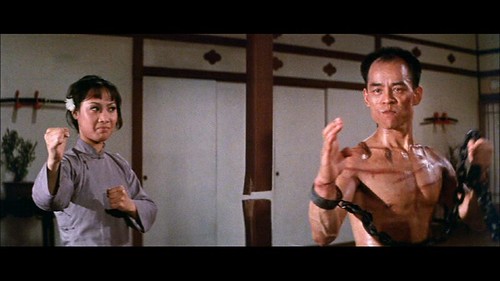
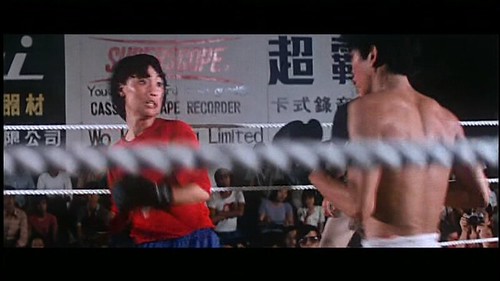

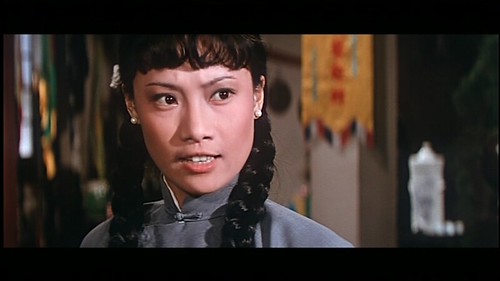


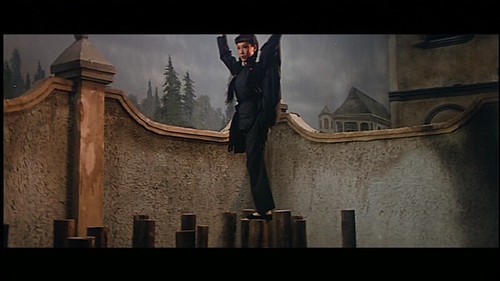
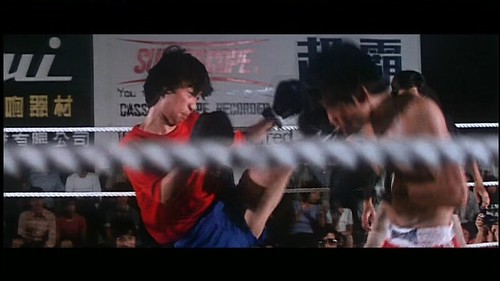
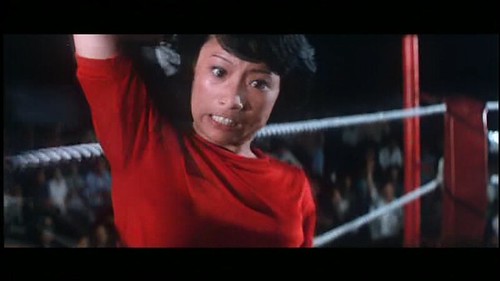
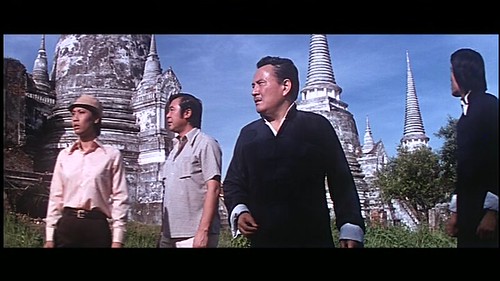
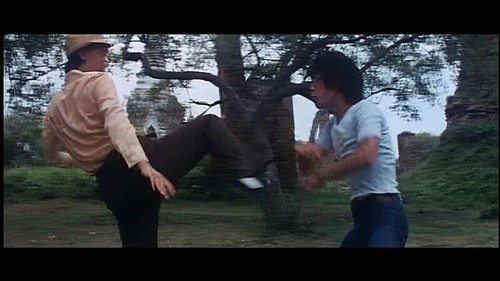
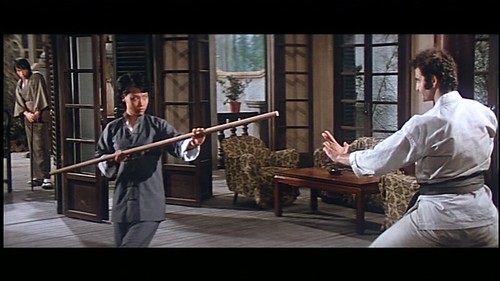

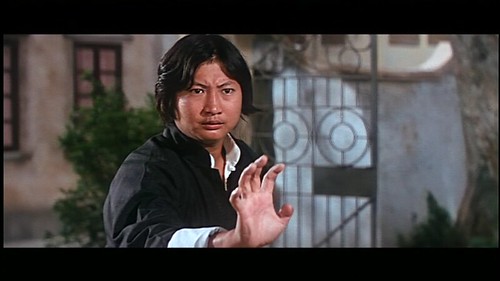




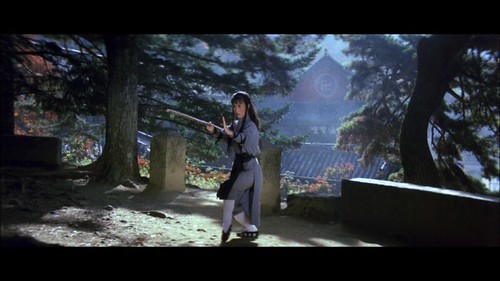
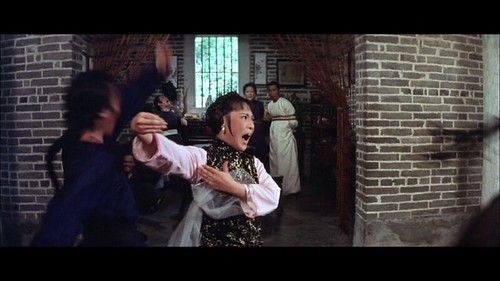
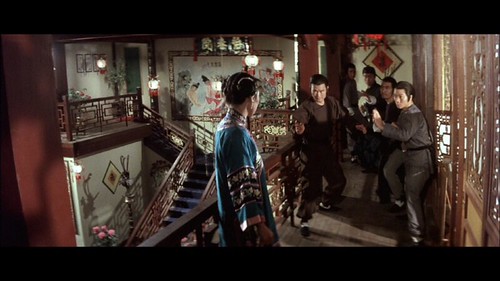
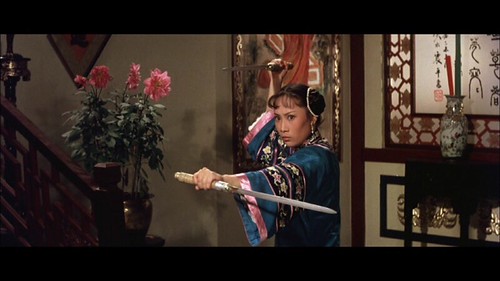
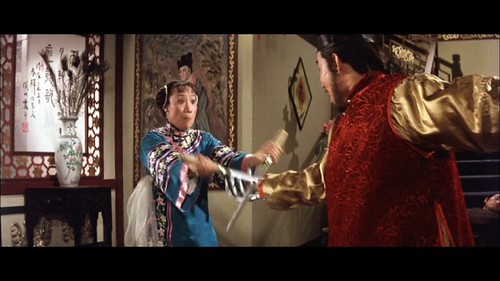
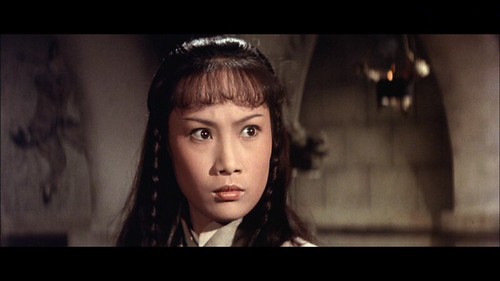
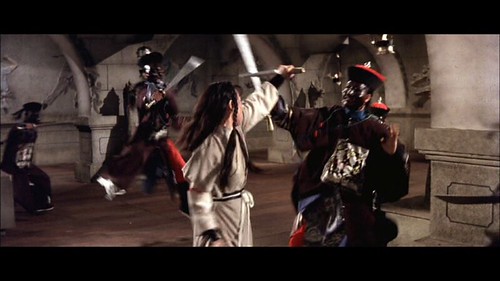
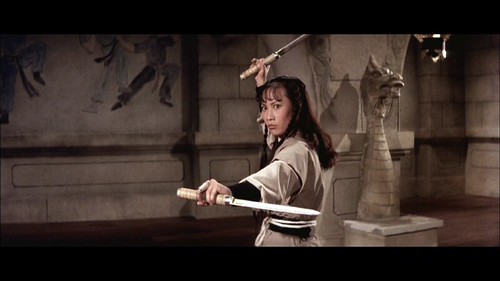





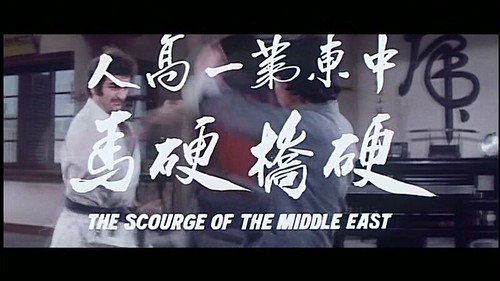


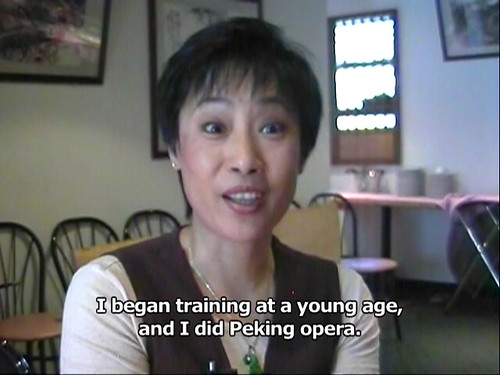

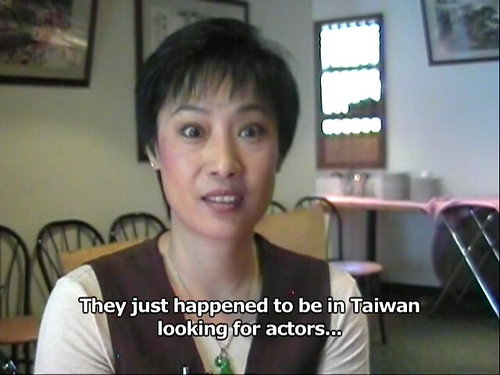

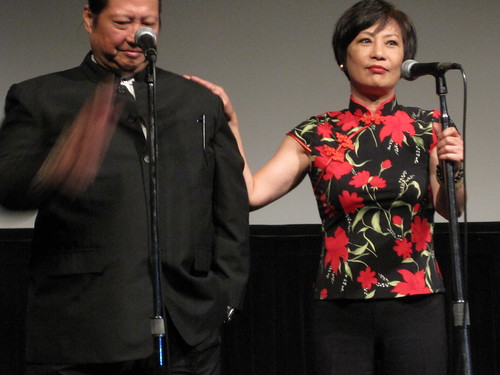
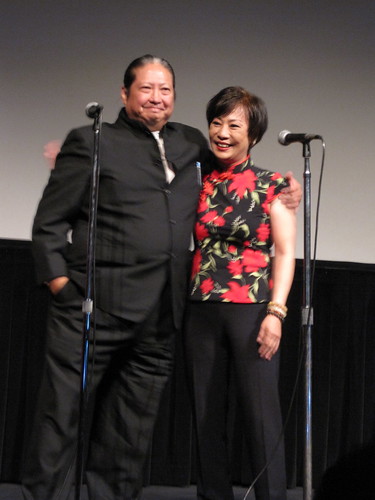
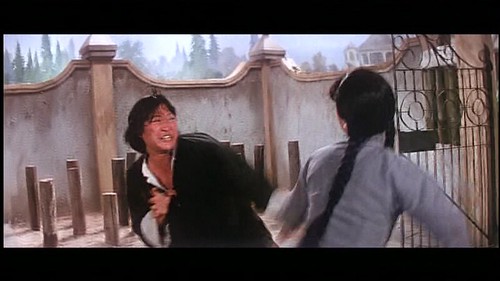
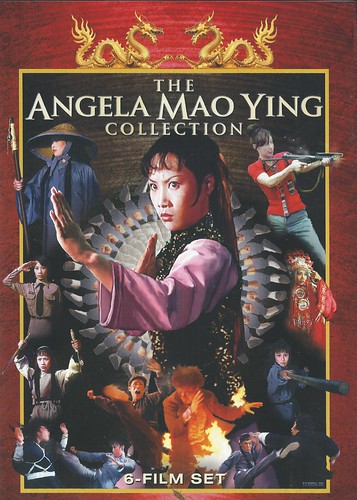

Hey Brian, good stuff. Excellent work.
Belated 66th Happy Birthday to Angela Mao Ying, one of finest and capable Kung-Fu and Martial arts expert of 1970s era. I personally impressed by her superb acting and Martial arts techniques in “Enter the Dragon” while fighting with Robert Wall and other artists, gang members of great mafia drug smuggler. This charisma of her about her film intended me to watch other other movies. God bless her.